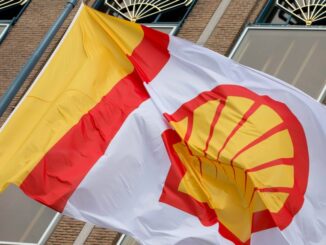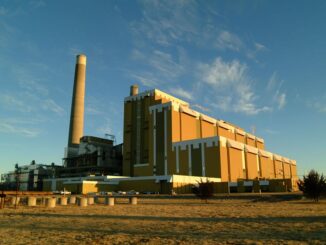
By Geoffrey Cann
The biggest new supply of energy after renewables will not come from a new oil and gas field, but from virtualized energy.
The Biggest Oil Discovery Ever
You don’t need to be an oil industry junkie to name the largest physical oil fields in the world. How about the heavy oil deposits of Venezuela, the goliath oil basins of Saudi Arabia, and the vast oil sands of Canada? The North Sea is synonymous with the wealth created for the UK and Norway. The Brent oil field was so prolific for so long that the industry has ever since priced global oil relative to the Brent product.
These oil fields were all discovered before 1970. Since then, the largest oil discovery wasn’t an oil discovery at all, but a technology shift.
In the aftermath of the repeated oil market upheavals in the 1970s (first with the OPEC energy embargo in 1973, followed by the Iranian Revolution of 1979), the real price of oil jumped from around $22/bbl to $75/bbl in a matter of months (in 2021 dollars), to $120/bbl by 1980.
In response, Americans, at the time the largest market for new car sales, abandoned the gas guzzling V8 motors produced in Detroit in favour of small Japanese imports, from the likes of Toyota, Datsun and Mazda. These light Asian cars sported much smaller, more fuel efficient engines. The big three Detroit automakers were forced to embark on a rapid retooling of their product lines to embrace fuel efficient four and six cylinder engines, and in the process, trimmed demand for gasoline, even as Americans drove further. By 1986, oil prices were back down nominally to $18/bbl.
In a sense, this big demand shift towards fuel efficient vehicles created the concept of a negative barrel, the barrel not produced or consumed, and is the net equivalent of a huge oil discovery.
As we race to adopt new battery electric vehicles (BEV), we are also creating a huge new energy supply, in the power stored in all those vehicles.
Virtual Energy
My gasoline vehicle has two on-board energy supplies—gas in the gas tank and the other in the lead acid battery.
Recently, Marj needed to use our little Japanese SUV for a short journey to the town to visit the accountant. Unfortunately, I had left the driver side door slightly ajar following the previous day’s grocery outing, the little vehicle battery was nearly spent, and the car would not start.
A few years ago, we bought a mobile battery booster pack (itself includes a lead acid battery) for just such emergencies, but we had never plugged in it, it too was dead, and worst of all, beyond recovery. We called around only to discover that there’s no publicly accessible mobile battery boosting service in our little town.
The episode reminded me of how backward our vehicle now feels. The gas tank was full but the vehicle was dead. Surely vehicle software can detect an open door and shut down unneeded lights, or send the idiot driver an alert to close the door.
And now both that little vehicle lead acid battery and gasoline tank are about to give way to a much larger lithium ion battery in an electric vehicle. A vehicle battery will store enough power to run much of your household needs (short of heat) for 10 days or longer.
No more visits to the gas station. Instead, all those vehicle batteries will have to plug into the power grid to get power (or to the home solar panel system if you have that kind of money) called ‘grid to vehicle’ or G2V. Power utilities have conveniently strung copper wires to virtually to every street corner.
Through that same plug, power can be dispatched back to the grid, or ‘vehicle to grid’, aka V2G.
Plug in all these vehicles to draw power at the same time and we’ll bring the grid to its knees. On the other hand, plug in enough vehicles with some software smarts at the same time, and an enormous amount of that battery power can be simultaneously dispatched back to the grid.
How much power are we talking about? A Tesla model 3 has an 80 kWh battery (meaning, it can deliver one kilowatt per hour for 80 hours). Assume the Tesla represents the average for BEVs. A thousand BEVs each dispatching a kilowatt into the grid for one hour delivers one megawatt hour of power.
In the US there are about 1.4 million pure BEV now on the road, admittedly all over the continent. It’s a reasonable assumption that most are for routine commuting, and are plugged in at night. In time, as BEVs become the dominant means of personal transportation, a huge number of those batteries will be simultaneously plugged into the grid and, if synchronized, could wheel a huge amount of on demand power to the grid to make up for some short falls, or to provide peaking power.
This is not the first energy inventory system I’ve seen.
Natural Gas in Storage
Batteries represent energy in inventory. The closest analogy that I can see already in the energy industry is natural gas storage in spent reservoirs or salt caverns, something in which the gas industry has considerable experience and expertise.
The demand for natural gas tends to peak in the winter when we need heat. To compensate, the industry produces gas at a relatively steady basis all year, above the summer consumption level (with the excess going into storage), and well below the peak consumption (with the peak demand being met by draw downs from gas storage). If we didn’t have gas storage, we’d need lots more gas wells to meet that peak demand, many would only run for very short times, and we’d be quite vulnerable to bad weather or upsets that took those gas wells off line (leading to price volatility and energy shortages).
Energy inventory (in the form of natural gas storage) has several generally positive consequences for the industry:
Lower investment in energy production in general (or, an opportunity high grade investment portfolios in energy production assets).
Improved asset utilization, as those fewer assets run at higher throughput more of the time.
Reduction in price volatility as the peaks are eroded away by the inventory.
Growth opportunity for new midstream businesses (or energy middlemen) to optimize the supply and demand in energy markets.
It’s the same analysis for BEVs:
Power utilities can tap into this fragmented energy inventory via software rather than through the addition of new natural gas power turbines.
Car owners can get in on the action and make their cars work harder, increasing their battery cycles and getting paid for energy.
Demand peaks can be shaved by battery energy, reducing price volatility in the wholesale power market.
A new industry awaits the software and sensor company that can create the code to deliver the virtual power plant from all those batteries, and capture the vehicle battery owner.
The Tesla grid battery in South Australia is an example of the power of an industrial battery upending the economics of the peaking plant model, and permanently destroying some gas demand. Tesla is also working on a virtual power plant leveraging household battery storage.
What insights does this hold for the oil and gas industry?
The Implications
If you’re responsible for strategic planning for an oil and gas company, here’s some observations from this analysis:
Virtual energy plants will pull investment away from traditional power generation capital plays.
Some existing peaking plants will be stranded.
Demand forecasts for natural gas for power generation will now need to take into account the rapidly growing fleet of batteries as an alternative source of energy, one which is rapidly growing everywhere, and on wheels.
The demand for battery vehicles will be strengthened as consumers realise they can make money from their batteries while they sleep, and contribute positively to decarbonization.
Gasoline vehicles will look increasingly out of step with progress, modern living, and social mores. Gasoline car owners can’t participate in this market because their energy inventory is gasoline in a tank, not electrons in a battery. Gasoline sales will diminish.
The customer relationship with the vehicle owner is up for grabs.
This energy supply is almost entirely enabled through sensors, software and the cloud.
Conclusions
The biggest oil discovery of my generation was in Detroit in the form of a technology shift. The adoption of battery electric vehicles is unlocking the largest new supply of power in the form of virtual power plants, and at the same time, hammering gasoline demand, natural gas investment and power generation.
Check out my latest book, ‘Carbon, Capital, and the Cloud: A Playbook for Digital Oil and Gas’, available on Amazon and other on-line bookshops.
You might also like my first book, Bits, Bytes, and Barrels: The Digital Transformation of Oil and Gas’, also available on Amazon.
Take Digital Oil and Gas, the one-day on-line digital oil and gas awareness course on Udemy.
Take the one-hour Digital for the Front Line Worker in Oil and Gas, on Udemy.
Biz card: Geoffrey Cann on OVOU
Mobile: +1(587)830-6900
email: [email protected]
website: geoffreycann.com
LinkedIn: www.linkedin.com/in/training-digital-oil-gas
Share This:



